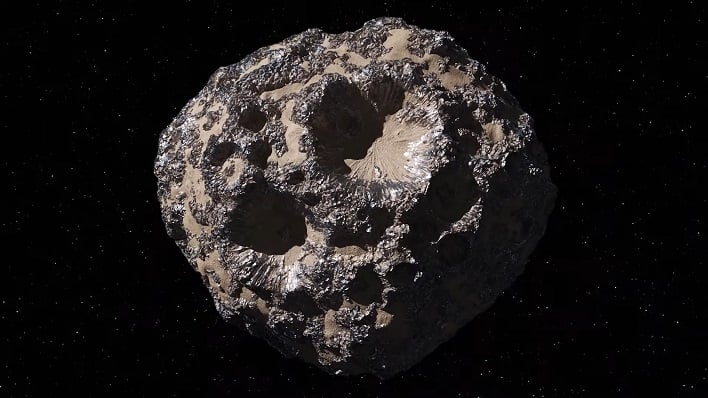
An asteroid the size of the Great Pyramid of Giza, discovered just two weeks ago, makes a close approach to Earth today. While the asteroid, named 2024 MK, poses no danger to Earth, it is a stark reminder of how large asteroids can escape detection until it could be too late.
The idea of a large sized asteroid, between 120 and 260m, being able to escape detection until just two weeks out from Earth is daunting. While an asteroid of this size is not large enough to cause a catastrophic event, if it were to impact Earth it would still cause “considerable damage,” according to the European Space Agency (ESA). 2024 MK was not detected until June 16, 2024, leaving little time to have prepared a plan for any type of asteroid deflection techniques, such as that tested with NASA’s DART program or other measures.
“There is no risk of 2024 MK impacting Earth. However, an asteroid this size would cause considerable damage if it did, so its discovery just one week before it flies past our planet highlights the ongoing need to improve our ability to detect and monitor potentially hazardous near-Earth objects,” remarked ESA.
DART, NASA’s Double Asteroid Redirection Test, successfully changed asteroid Dimorphos’ motion in space through kinetic impact. This week NASA selected 12 participating scientists to join ESA’s Hera mission, aimed at studying the binary asteroid system Didymos, including moonlet Dimorphos. The collective objectives of DART and Hera are to validate the kinetic impact method as a technology to deflect an asteroid on a collision course with Earth—something that could prove extremely valuable if a very large asteroid ever has a direct path toward Earth in the future.
It may be possible to observe 2024 MK with a small telescope or a good pair of binoculars later tonight if viewers have dark, clear skies. An excellent resource for planning such an outing is ESA’s NEO TOOLKIT, a set of astronomical tools designed by the NEO Coordination Center of the ESA’s Planetary Defence Office. For now, at least, Earth is safe from any large asteroids slamming into its surface, such as 2024 MK, and fellow asteroid 2011 UL21, that measures 2,310 meters in diameter and also made a close-to-Earth flyby on June 27.
